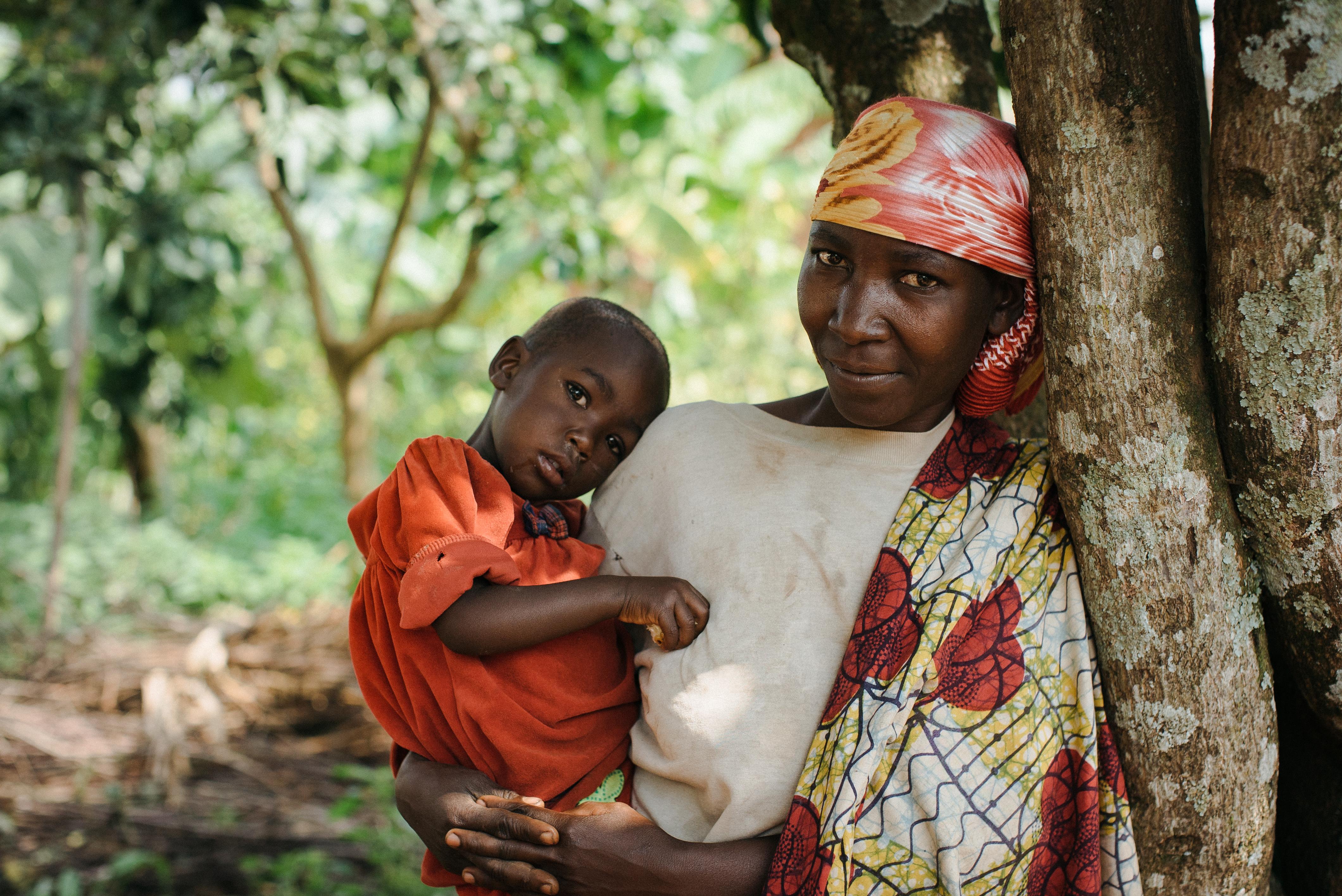Mental disorders in children and adolescents, including depression, anxiety and behavioural disorders are estimated to account for approximately 16% of the global disease burden; the prevalence is twice as high in girls as it is in boys, especially after the first menstruation [1]. According to estimates, depression affects one-fourth of the adolescent populations in sub-Saharan Africa [2]. About 32.5% of adolescents in Ghana's rural areas experience depressive symptoms and the prevalence is higher among girls.
What’s the association between food insecurity and depression?
Food insecurity is a growing concern since inadequate food intake and nutrition can have a severe impact on adolescents' and children's mental health and physical well-being [3]. A little over one-third of households in Ghana's Northern Region experience food insecurity. A few studies have shown that food insecurity is positively associated with depression among adults [4]. Although the possible mechanism linking food insecurity to poor mental health or depression is unknown, it is hypothesised that the reason is related to the influence of insufficient micronutrient intake in the diet. For optimal health, sufficient intake of iron, zinc, vitamin A, and B vitamins, including folate and B12, as well as vitamin C [5] are required. Antioxidant micronutrients, particularly, have been shown to promote mental wellness [6].

Woman thinking, back view
The study included over 500 adolescent girls in Ghana
Data on the association between food insecurity and depression in sub-Saharan Africa is scarce and the association among adolescents is not well known. Hence, we analysed end-line data from the Ten2Twenty-Ghana randomised controlled trial to examine the association between household food insecurity and depressive symptoms among adolescent girls in Ghana. We hypothesised that household food insecurity is positively associated with depression among adolescent girls. The study population included over 500 adolescent girls aged 10-17 years randomly chosen from 19 primary schools in the Mion District of Ghana’s northern region. The data was collected in September 2019, at the beginning of the farm harvest season. The children's depression inventory [7] and the Food Insecurity Experience Scale [8] were used to assess depression and household food insecurity in face-to-face interviews. The analysis accounted for potential confounding factors including girl-level psychosocial (life satisfaction, self-efficacy, self-esteem, and health complaints), dietary and nutritional-status covariates; maternal covariates and household socio-economic related covariates. Pre-tested validated scales were used in face-to-face interviews to collect all other data.
Food insecurity seems to be positively associated with depression
In our study, a little over two-thirds of the girls were from food-insecure households, and one-fifth of them were classified as likely depressed; the prevalence of depression increased with the severity of food insecurity (Figure 1 a & b). Adolescent girls from food-insecure households consumed fewer animal-sourced foods in the last month compared to their peers from food-secure households. Girls from food-insecure households also had a lower dietary diversity score compared to their peers from food-secure households. Compared to girls from food-secure households, those from moderately and severely food-insecure households had about three times the odds of being classified as depressed, after controlling for potential confounders. The odds of being likely depressed were about twice for adolescent girls from food-insecure households compared to their peers from food-secure households in both the crude and final adjusted model. Regardless of the statistical strategy utilised (logistic regression or linear mixed approaches), the observed association remained.
Figure 1. The (a) prevalence of household food insecurity (b) and the prevalence of depressive symptoms among the adolescent girls by household food security status
Interventions in disadvantaged households are essential to address food insecurity and depression
The mechanism behind the link between household food insecurity and depressive symptoms in adolescents remains unknown. However, previous research has shown that psychological stress can be caused by uncertainty in the household food supply; children’s awareness of the unstable food supply and efforts to regulate it can be destabilizing, leading to depressive symptoms [9]. Furthermore, food insecurity is a known determinant of dietary and nutrient inadequacies, and research has shown that poor micronutrient intake may result in behavioural issues via deterioration and issues on the nervous system [10]. Recent studies show that adolescents who experience food insecurity are more likely to eat fewer fruits and vegetables, fewer animal-source foods, skip breakfast, and family meals, consume fast foods, and drink high-sugar beverages, restricting their access to healthier foods and adequate nutrition [11]. The findings of our study highlight the need to provide adolescent girls with constant access to healthy food at home, which could improve food intake and reduce depression related to food access. To address food insecurity and depression, intervention initiatives should target economically disadvantaged households and incorporate coping and broad mental health measures. Our findings may be generalised to all rural adolescent girls in northern Ghana and similar settings.
If you’re interested in the nexus of food insecurity and mental health check out this IMMANA EGM (Evidence Gap Map) which was designed to synthesise large volumes of information in order to identify key knowledge gaps in Agriculture, Nutrition and Health.
References
1. WHO. World Health Organization. Adolescent mental health. 2019. Accessed on 27 Feb 2020 from: https://www.who.int/news-room/fact-sheets/detail/adolescent-mental-heal…. 2019.
2. Jörns-Presentati A, Napp A-K, Dessauvagie AS, Stein DJ, Jonker D, Breet E, et al. The prevalence of mental health problems in sub-Saharan adolescents: A systematic review. PLoS One. 2021;16:e0251689.
3. O’Neil A, Quirk SE, Housden S, Brennan SL, Williams LJ, Pasco JA, et al. Relationship between diet and mental health in children and adolescents: A systematic review. Am J Public Health. 2014;104:e31–42.
4. Pryor L, Lioret S, Van Der Waerden J, Fombonne É, Falissard B, Melchior M. Food insecurity and mental health problems among a community sample of young adults. Soc Psychiatry Psychiatr Epidemiol. 2016;51:1073–81.
5. Mattei D, Pietrobelli A. Micronutrients and brain development. Curr Nutr Rep. 2019;8:99–107.
6. Popper CW. Single-micronutrient and broad-spectrum micronutrient approaches for treating mood disorders in youth and adults. Child Adolesc Psychiatr Clin. 2014;23:591–672.
7. Vega R de la, Racine M, Sánchez-Rodríguez E, Solé E, Castarlenas E, Jensen MP, et al. Psychometric properties of the short form of the Children’s Depression Inventory (CDI-S) in young people with physical disabilities. J Psychosom Res. 2016;90:57–61.
8. Ballard T, Kepple A, Cafiero C. The food insecurity experience scale: development of a global standard for monitoring hunger worldwide. Tech Pap. 2013; October:1–51.
9. Leung CW, Stewart AL, Portela-Parra ET, Adler NE, Laraia BA, Epel ES. Understanding the psychological distress of food insecurity: a qualitative study of children’s experiences and related coping strategies. Physiol Behav. 2016;176:100–106.
10. Beard JL, Wiesinger JA, Connor JR. Pre- and postweaning iron deficiency alters myelination in sprague-dawley rats. Dev Neurosci. 2003;25:308–15.
11. Burke MP, Martini LH, Blake CE, Younginer NA, Draper CL, Bell BA, et al. Stretching food and being creative: caregiver responses to child food insecurity. J Nutr Educ Behav. 2017;49:296–303.



